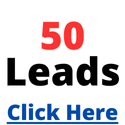Leased Ad Space
Crossing the Line - the line between performance and traditional advertising has been breached and the best days of affiliate marketing are ahead.
By Greg Shepard
Years before the NASDAQ tanked and banner advertising died, e-commerce pioneers like Amazon.com and CDNow began partnering with topic-centric websites to drive revenues, paying a commission for each sale referred. The practice spread quickly and became known as “affiliate marketing.” By early 1999, Forrester Research proclaimed “affiliate programs” as the Web’s most effective traffic-driving technique – almost twice as effective as banner advertising.
Consider that by September 1999, more than three years after Amazon launched, there were over 1,000 merchants offering affiliate programs. And by 2000, Amazon’s Associates Program had grown to over 500,000 affiliates. What Amazon founder and CEO Jeff Bezos started as a polite conversation had grown into an entirely new industry, bringing with it affiliate networks, directories, newsletters and a variety of consultants. Other innovations followed and affiliate marketing is now an integral part of the Web’s composition. It’s also now widely heralded as the Web’s most cost effective marketing vehicle.
Still, as affiliate marketing evolved, issues with the model have been exposed. The affiliate community needs to remember that affiliate marketing is not about generating cheap advertising, but developing profitable strategic relationships.
But now there is a way for merchants to now offer a win-win where both merchants and affiliates have a vested interest. Improving technologies now make it possible for the formerly CPS, CPA, CPL performance programs and the CPM, CPC, and flat advertising models to unify creating a new hybrid that I call the CPP (Cost-Plus-Performance) model.
The CPP combines a paid campaign with a performance campaign and offers the best of both worlds. I see this as the future of affiliate marketing, a wide-open world of performance and payment where the CPP takes inventory lost to Google’s AdSense and advertisers back. The result is a whole new world of opportunities for merchants, affiliate managers and affiliates.
The hybrid CPP is converting former CPM, CPC advocates into affiliate marketing believers. For many top websites, affiliate marketing now represents a chance to loosen the grip of pay-per-click search engines and costly advertising. The most difficult obstacle in affiliate marketing is finding good affiliates with traffic. If a site sells traffic then they must have it, and if you negotiate a Cost-Plus-Performance payout valuable opportunities begin to open up.
Merchants are also realizing that affiliates need better tools as well. Technologies such as data-feeds, site and shopping cart abandonment (exit traffic) promise to allow merchants, who are also affiliates, to increase EPC and EPM numbers without compromising the visitors experience, thereby improving monetization. By simply offering additional products and/or service offers at or after the point of sale, merchants can add revenue without diluting the sales process.
It’s becoming clear to merchants, affiliate managers and affiliates that the line between performance and traditional advertising has been breached.
It started with Google’s entry into the market. Google’s AdSense captured valuable affiliate program inventory, which caused the flexible affiliate marketers to evolve again. The industry’s response was to tangle with the paid advertising side of the market. Google’s method is to pay out for ad space – the same ad space that was used by affiliate marketers. That limits available inventory and changes the Web publisher’s expectations.
Some affiliate marketers using AdSense end up to cannibalizing their own market. Why? To get guaranteed income from traffic. If you pay for traffic, you’re guaranteed to get it. The merchants get guaranteed traffic and the affiliates get guaranteed revenue from traffic. However, this presents a problem. Traditional advertising places the risk on the merchants, while performance places the risk on the affiliate. In either case only one has a vested interest in the campaign.
It’s clear from a handful of recent studies and reports that marketers are frustrated with the current process.
In a survey of 135 senior-level marketers a recent study found that while 60 percent of respondents said that defining, measuring and taking action on ROI is important, only 20 percent are satisfied with their ability to do so. In addition, 73 percent reported a lack of confidence in their ability to understand the sales impact of a campaign.
The study, conducted by Marketing Management Analytics (MMA), the Association of National Advertisers (ANA), and Forrester Research in April 2005, was presented in July at ANA’s 2005 Marketing Accountability Forum.
Also this summer, a MediaLife’s media buyer survey quantified what most already suspected: media buyers think that about only half of media reps know what the heck they’re doing (via MediaBuyerPlanner.com). A significant minority of the buyers – about one in six – have such a low opinion of representatives that they said only 10 or 20 percent are useful.
Complaints centered, unsurprisingly, on time wasting, both in the form of over-contacting and proving ill prepared when conversations do take place. Another big complaint proved to be overly hard selling, with some reps seeming to believe that repetition or browbeating may succeed in getting a property on the buy where the numbers won’t.
Half of the buyers said they agree with the statement that the rep problem was “no big deal. Sure, they’re annoying sometimes, but I’m sure they find me equally so. It’s how the industry is set up.” About 45 percent agreed instead that they are “a necessary evil. Most are okay, but there are a few really obnoxious ones I hate doing business with.”
Even with all the issues, the good news is that the affiliate community is still evolving. Organic search is becoming more competitive. CPM rates are going up. Paid search is becoming cost prohibitive and the need for cost effective online inventory is becoming stronger, causing the affiliate space to grow at ever increasing rates. As merchants, affiliate managers and affiliates become even more interwoven, the friction decreases and new forms of integration and aggregation are made possible.
I see it this way – the race is on! In the last year the number of merchants offering affiliate programs has more than quadrupled. Literally, millions of websites now participate as affiliates – from personal homepages at Geocities and Homestead to Fortune 500 companies. And now, more often then not, merchants with affiliate programs are also affiliates.
Whether termed affiliate marketing, collaborative commerce, revenue sharing or syndicated selling, the affiliate space leads the way in the ever changing landscape of online marketing and has become the Web’s fastest, simplest and most cost effective marketing vehicle.
As both merchants and affiliates continue to recognize the power of change, affiliate marketing’s best days are yet to come. In a few short years, affiliate marketing looks to become the tail that wags the dog – controlling the majority of the adverting and marketing dollars. Despite the less then impressive advancements in the advertising world and hype, affiliate marketing stays true to its origins as a better way of connecting buyers and sellers and rewarding those that facilitate those relationships.
About Gilles Goyette
Hello Everyone, My name is Gilles Goyette, I am married and have 3 wonderful children. I live in Quebec, Canada. My first language is French and I am work from home for more than 10 years. I have been marketing online since 2005. Over the past 13 years I have invested a vast amount of time and money in my business education, my area of expertise is in photo copier and offset press services. I turned to internet marketing in 2008 because our local economy and too much competition in that particular domain. Marketing online in my opinion is much more rewarding and offers the freedom over time restraints that a traditional business has. I have enjoyed my online marketing very much. It took me 5 years of jumping from business to business banging my head against the wall before I figured out how to profit online. You are not alone there is a solution. I am working on a step by step formula on how to help my coworkers to see the light at the end of tonal. I will = Failure. Action = Success So keep focusing on your goal. Build your list! P.S. Check out my favorite programs



